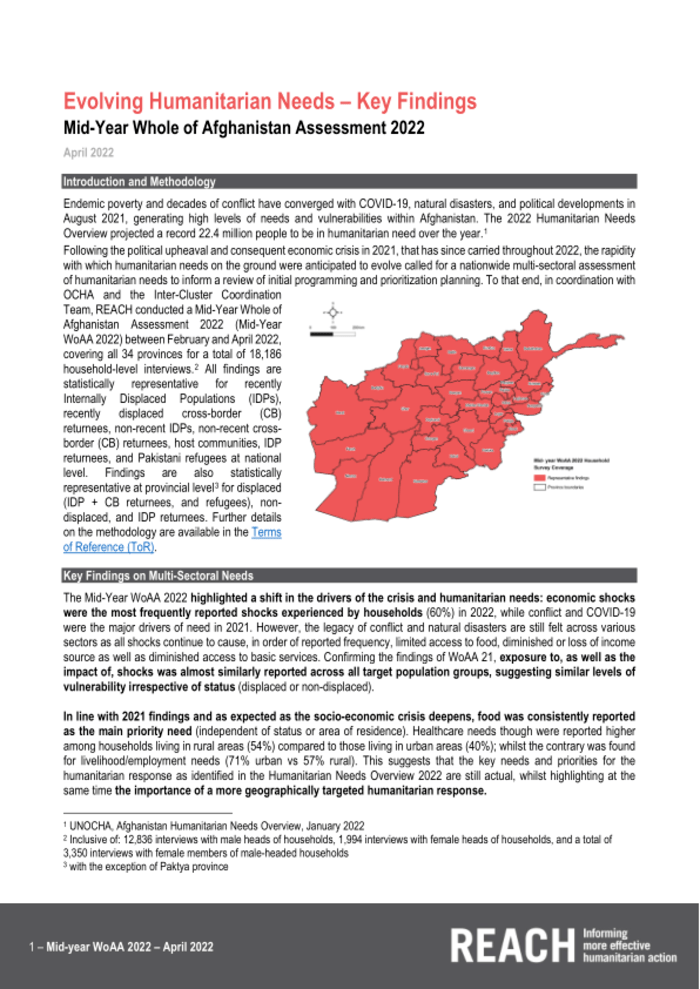Introduction and Methodology
Endemic poverty and decades of conflict have converged with COVID-19, natural disasters, and political developments in August 2021, generating high levels of needs and vulnerabilities within Afghanistan. The 2022 Humanitarian Needs Overview projected a record 22.4 million people to be in humanitarian need over the year.1 Following the political upheaval and consequent economic crisis in 2021, that has since carried throughout 2022, the rapidity with which humanitarian needs on the ground were anticipated to evolve called for a nationwide multi-sectoral assessment of humanitarian needs to inform a review of initial programming and prioritization planning. To that end, in coordination with OCHA and the Inter-Cluster Coordination Team, REACH conducted a Mid-Year Whole of Afghanistan Assessment 2022 (Mid-Year WoAA 2022) between February and April 2022, covering all 34 provinces for a total of 18,186 household-level interviews.2 All findings are statistically representative for recently Internally Displaced Populations (IDPs), recently displaced cross-border (CB) returnees, non-recent IDPs, non-recent crossborder (CB) returnees, host communities, IDP returnees, and Pakistani refugees at national level. Findings are also statistically representative at provincial level3 for displaced (IDP + CB returnees, and refugees), nondisplaced, and IDP returnees. Further details on the methodology are available in the Terms of Reference (ToR).


